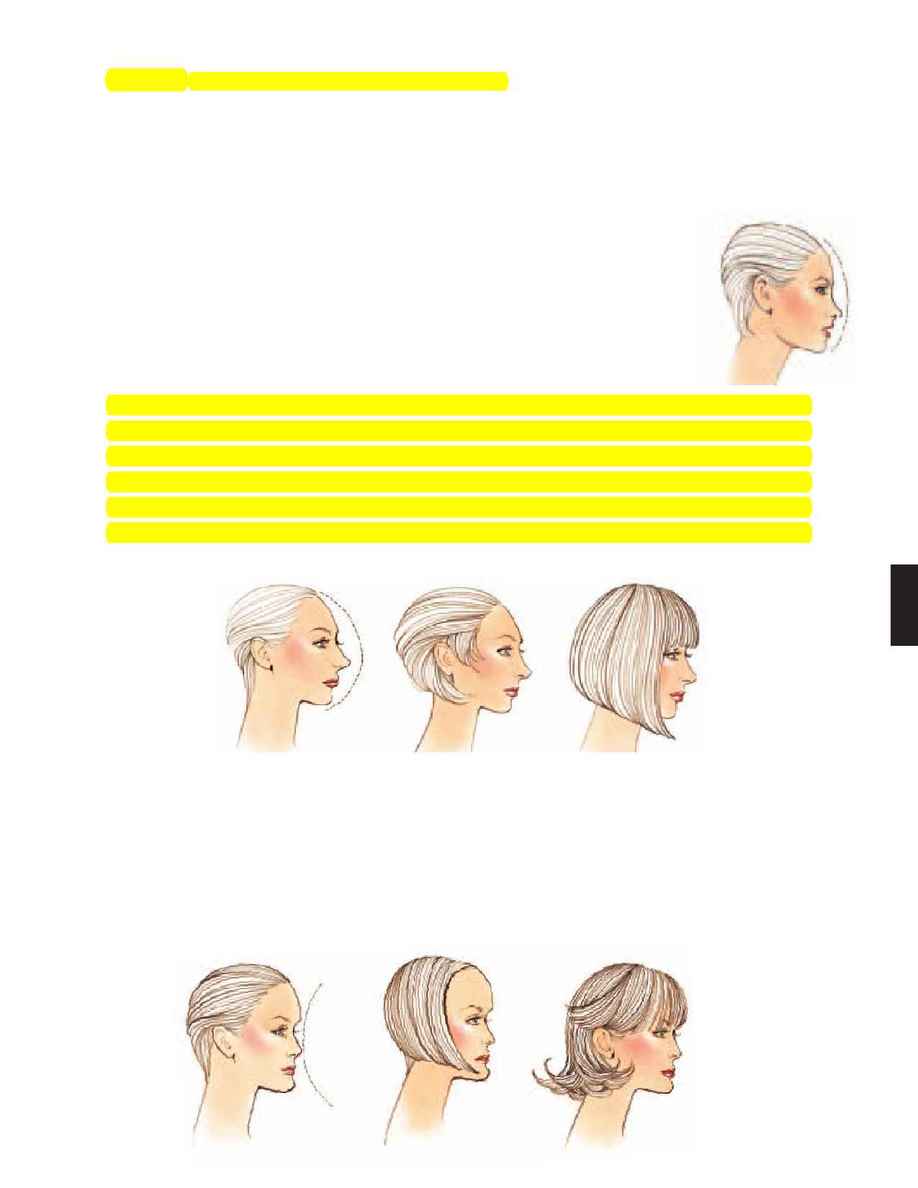
Profile
(outline of the face from the side)
Since your clients are viewed from various angles, it is important that their hairstyle complement
their profile as well. The most notable features of the profile are the forehead, the nose and the chin.
You may wish to give your clients a hand-held mirror to help them view their profile as you make
recommendations.
There are three different types of profiles, straight, convex and concave.
Straight Profile
A straight profile has a very slight outward curvature from the front hairline to
the tip of the nose and from the tip of the nose to the chin. Straight profiles are
considered to be the ideal and can be totally exposed.
Convex Profile
A convex profile has a strong outward curvature resulting from either a protruding nose or a sloping fore-
head or chin. For the convex profile, it is advisable to create the illusion of a straight profile. Adding
volume to the fringe area and the forehead will visually shorten the length of the nose. To balance a slop-
ing chin, keep the shape of the hair tighter in the nape so the chin doesn't appear too small in comparison
to the hair volume. With a bob, create a diagonal-forward perimeter line that points directly to the chin to
make it appear larger. A receding chin on a male client can be camouflaged by a full beard and mustache.
Concave Profile
A concave profile has an inward curve, which is most often the result of a dominant, protruding
forehead and chin or a small nose. To compensate for the dominant chin, build fullness in the nape
and avoid short nape lengths and diagonal forward lines, since this would cause the chin to stand
out even more. To cover up a large forehead, cut fringes and style them with little volume. Moving
the hair off and away from the face will compensate for the smaller nose.
231
DESIGN DECISIONS
8
